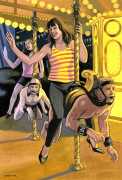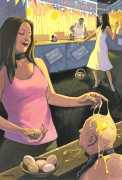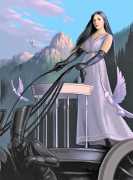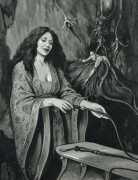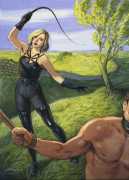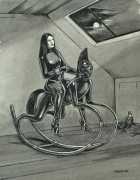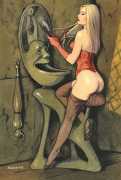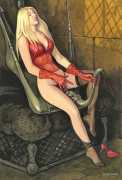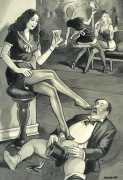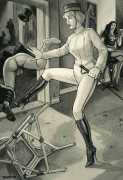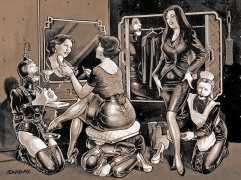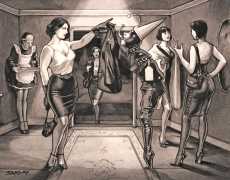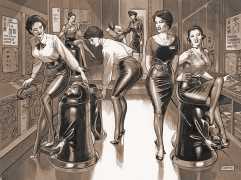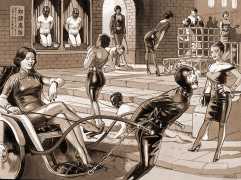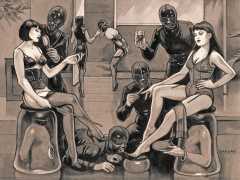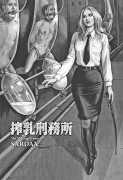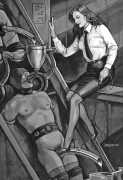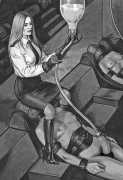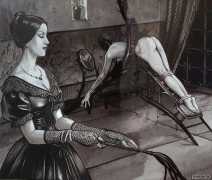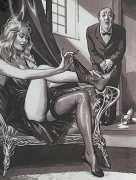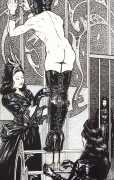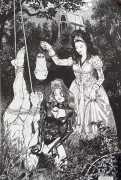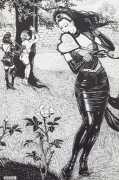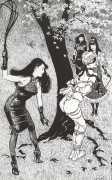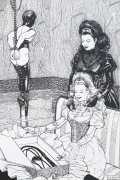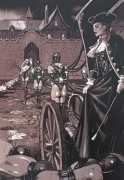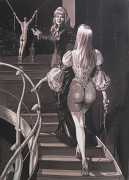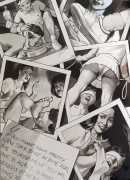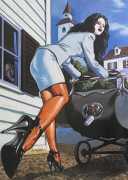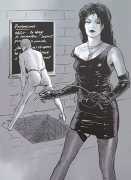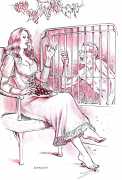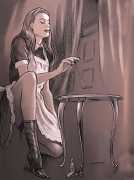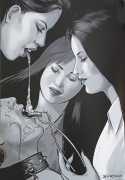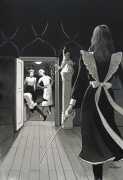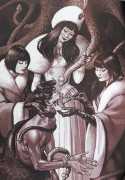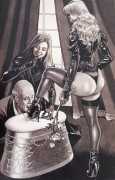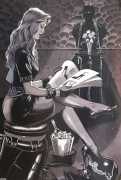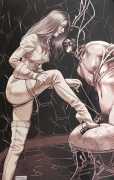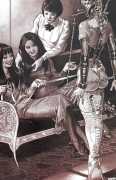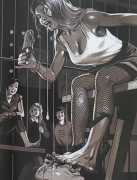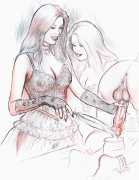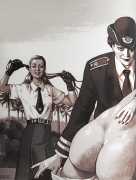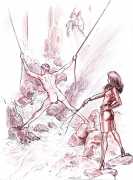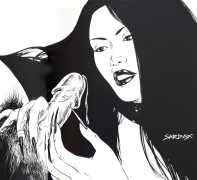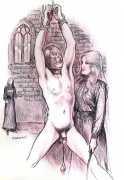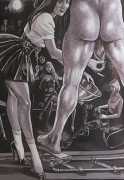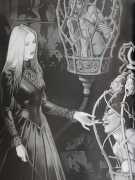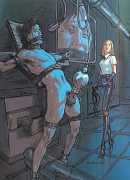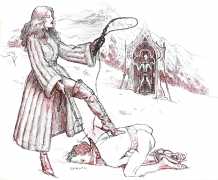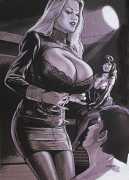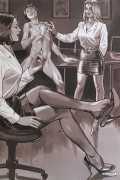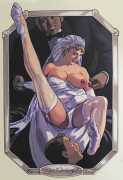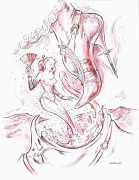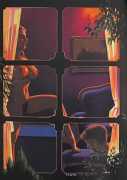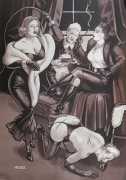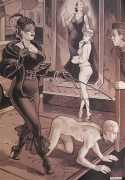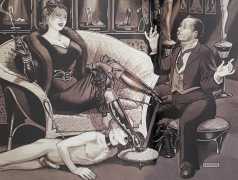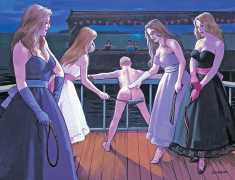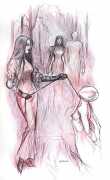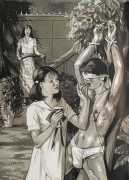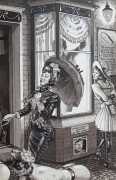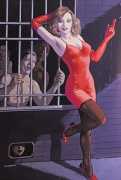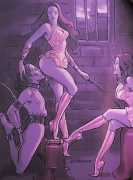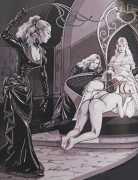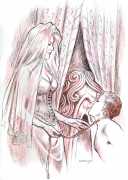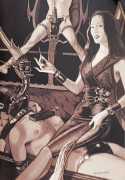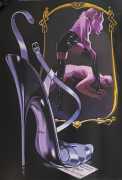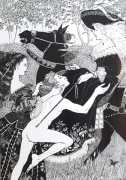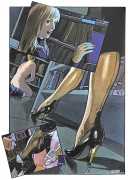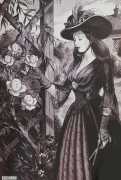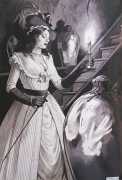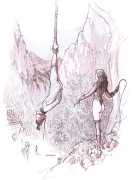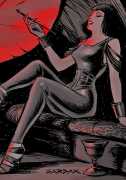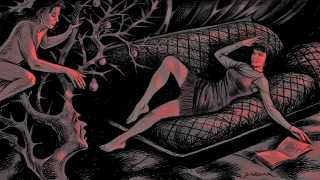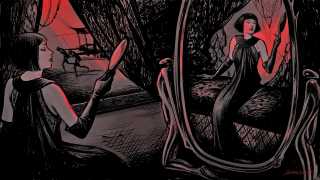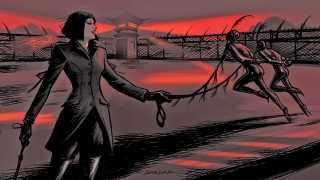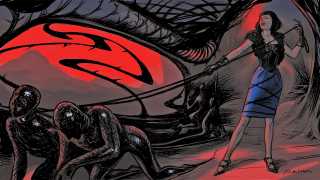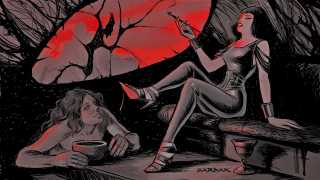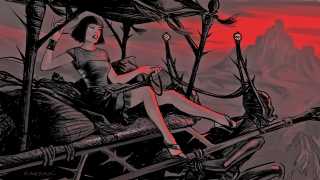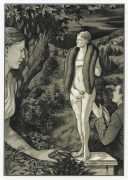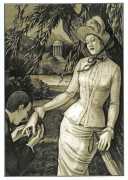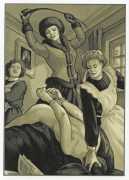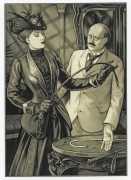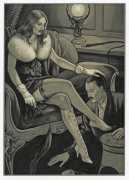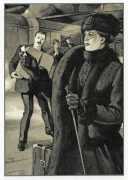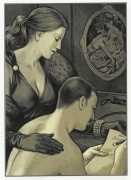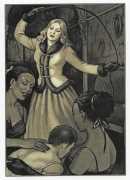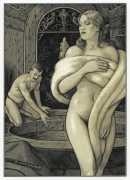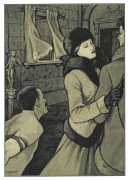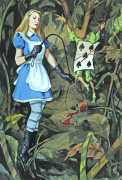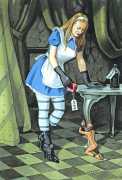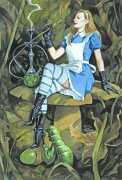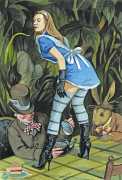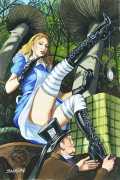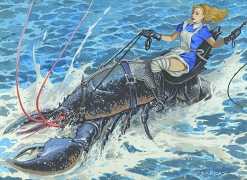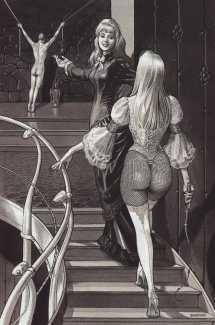 In a career spanning more than four decades, the London-based artist Sardax has earned a well-deserved reputation as one of the world’s best-known contemporary illustrators of what has become known as femdom, short for female dominance. Though the term was only first recorded in 1986, the concept and practice are as old as human imagination, where mistresses, madams and dominatrixes are a constant theme in erotic literature and illustration.
In a career spanning more than four decades, the London-based artist Sardax has earned a well-deserved reputation as one of the world’s best-known contemporary illustrators of what has become known as femdom, short for female dominance. Though the term was only first recorded in 1986, the concept and practice are as old as human imagination, where mistresses, madams and dominatrixes are a constant theme in erotic literature and illustration.
Sardax’s specialities are a conventionally figurative technique combined with an unbounded imagination. Though he has only illustrated two books, The Art of Sardax (Erotic Print Society, 2006) and his own translation of Leopold von Sacher-Masoch’s Venus in Furs (Stiletto, 2013), his artwork has featured in numerous specialist magazines and his commissions, many from working dominatrixes, have reached an enormous international audience.
Sardax is of course a nom-de-plume, and we are fortunate that he himself has explained its origins: ‘Where does it come from? I once had a jacket with a label called Sardar – one day I read it as Sardax, which evoked links with sardonic, sarcastic, salacious, Victorien Sardou (the French playwright and author of Tosca), and the comic artist Crepax. It was perfect, and stuck.’
We are also fortunate that Sardax has written about how what set him on the path of femdom illustration. In a 2015 blog post he writes:
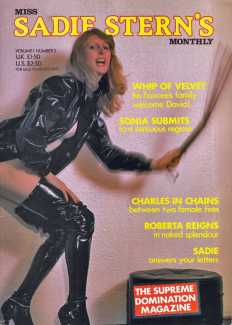 How did it all start? For some it started very early, but for me it was a lightbulb moment at the relatively old age of eighteen. Browsing the top shelf in a London shop, my eyes lit upon my first femdom magazine – it sent a shiver down my spine, something strange but delicious at the same time.
How did it all start? For some it started very early, but for me it was a lightbulb moment at the relatively old age of eighteen. Browsing the top shelf in a London shop, my eyes lit upon my first femdom magazine – it sent a shiver down my spine, something strange but delicious at the same time.
It’s hard these days to conceive of a world without digital imagery. Today you can innocently think you might enjoy an obscure fetish, google it, and a vast array of images spring to life. In those far-off days it was like a candle flame flickering in the distance; we stumbled towards it, not understanding ourselves quite what it was we wanted. We were at the mercy of what you might find on a furtive trip to a sex shop. Back then, femdom was very much the Cinderella of kink, and it was an occasion for rejoicing when a new magazine came out that hit the spot.
And the publication which hit that sweet spot in 1979 was Miss Sadie Stern’s Monthly. There it was, sitting on the top shelf, willing me to explore what it offered. In hindsight all the models were rather tired-looking and disengaged, but it didn’t matter; it was all so new and rare, and I was young. Sadie Stern only appeared once a month, so I reread every issue again and again.
I never in fact worked for Sadie Stern. It was too early, before I even got into drawing femdom. By the time I was beginning to look for commissions it had descended into a graveyard of phone-sex ads, with minimal photo sets and hardly any text. Yet my memory retains its importance as the spark that set me off on the path of femdom illustration, and kept me going until I felt confident enough to start producing my own artwork.
Sardax started his illustration career drawing fairly conventional erotica, but by the late 1990s was firmly established as a femdom artist, working for publications including The Governess and the American fetishist magazine Leg Show. Commissions from Japanese magazines also took him down the path of oriental femdom, and one of his inspirations is the Japanese femdom artist Namio Harukawa.

An imagination that goes beyond most sadomasochistic fantasies is one of Sardax’s trademarks. As he has written, ‘there should be a strong fantasy element in S&M, but sadly it is too often a world of well-worn clichés – the dungeon, the castle. I believe that drawings can take you to places that photographs never can. My settings might include a tropical rainforest, an Alpine scene, a Greek valley, a Roman or Victorian interior; or it might be so completely off the wall that it belongs to no particular time or space continuum at all. I always try to breathe slivers of imagination into the genre. If you find yourself yawning every time you wade through a gig of similar images showing dungeons or living rooms I sympathise with you. I feel it myself.’
Many of Sardax’s classic images were painted in watercolour, and enhanced with white gouache and black Indian ink. Even in the age of computers he draws first on paper, then uses the computer to add colour and shading. Among his formative influences he includes the black and white work of Franz von Bayros and Chéri Hérouard.
Over the years Sardax has created several websites to showcase his work, including Sartopia and Oriental Whip Queens; his work also featured regularly on Humiliatrix. Nowadays, however, a selection of his work can be found on the Sardax website, which you can reach here; his more regular contributions are to be found on his Wordpress blog, which is here.


